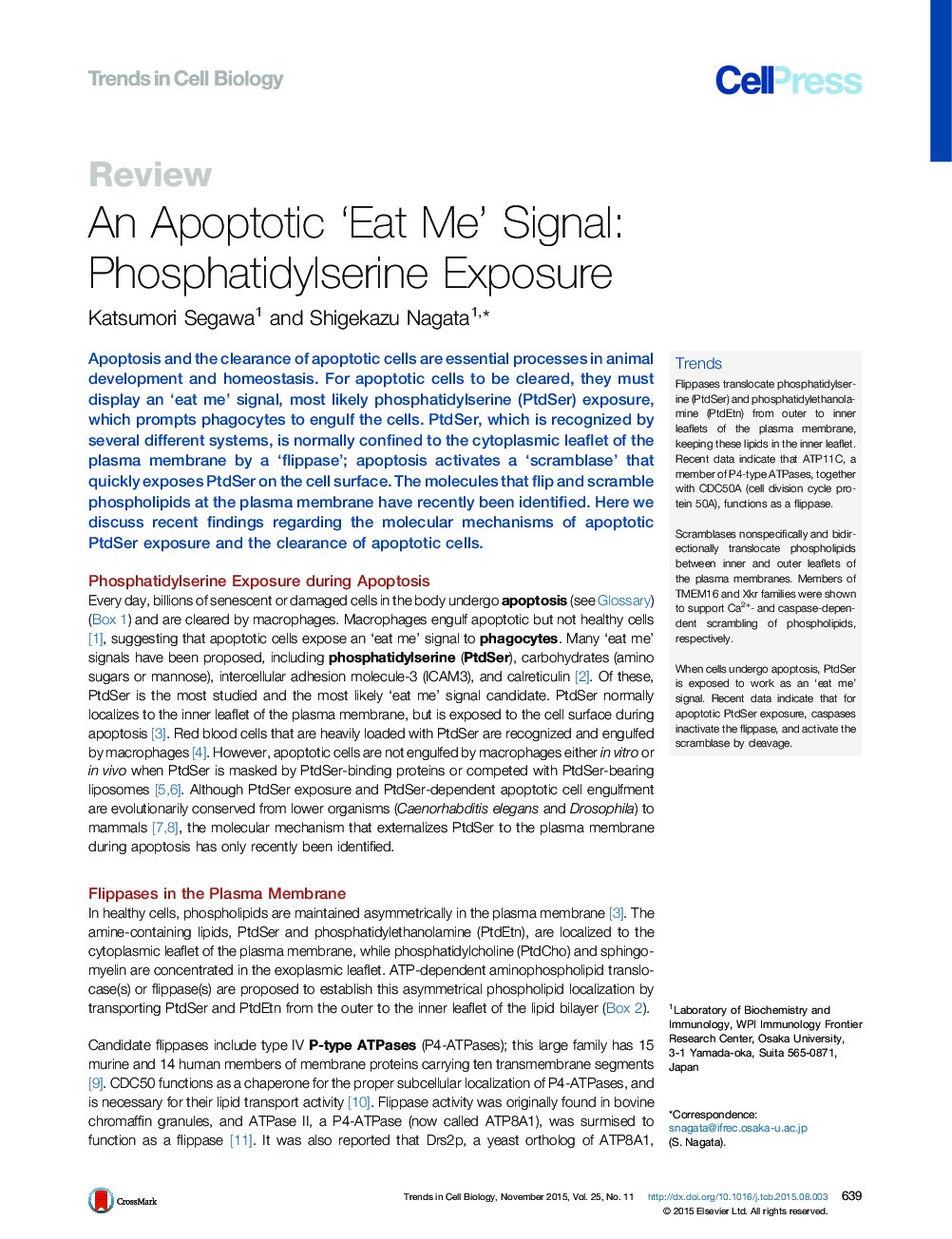| Article ID | Journal | Published Year | Pages | File Type |
|---|---|---|---|---|
| 2204280 | Trends in Cell Biology | 2015 | 12 Pages |
Apoptosis and the clearance of apoptotic cells are essential processes in animal development and homeostasis. For apoptotic cells to be cleared, they must display an ‘eat me’ signal, most likely phosphatidylserine (PtdSer) exposure, which prompts phagocytes to engulf the cells. PtdSer, which is recognized by several different systems, is normally confined to the cytoplasmic leaflet of the plasma membrane by a ‘flippase’; apoptosis activates a ‘scramblase’ that quickly exposes PtdSer on the cell surface. The molecules that flip and scramble phospholipids at the plasma membrane have recently been identified. Here we discuss recent findings regarding the molecular mechanisms of apoptotic PtdSer exposure and the clearance of apoptotic cells.
TrendsFlippases translocate phosphatidylserine (PtdSer) and phosphatidylethanolamine (PtdEtn) from outer to inner leaflets of the plasma membrane, keeping these lipids in the inner leaflet. Recent data indicate that ATP11C, a member of P4-type ATPases, together with CDC50A (cell division cycle protein 50A), functions as a flippase.Scramblases nonspecifically and bidirectionally translocate phospholipids between inner and outer leaflets of the plasma membranes. Members of TMEM16 and Xkr families were shown to support Ca2+- and caspase-dependent scrambling of phospholipids, respectively.When cells undergo apoptosis, PtdSer is exposed to work as an ‘eat me’ signal. Recent data indicate that for apoptotic PtdSer exposure, caspases inactivate the flippase, and activate the scramblase by cleavage.
